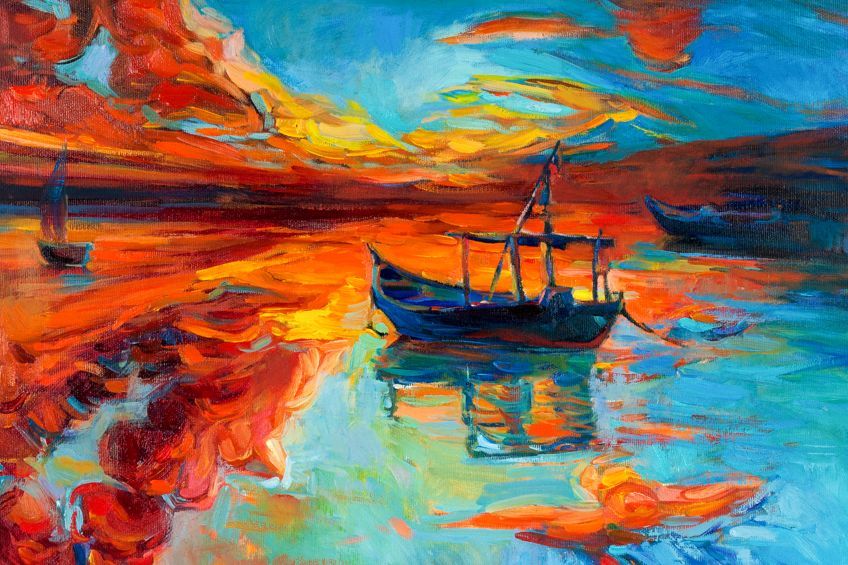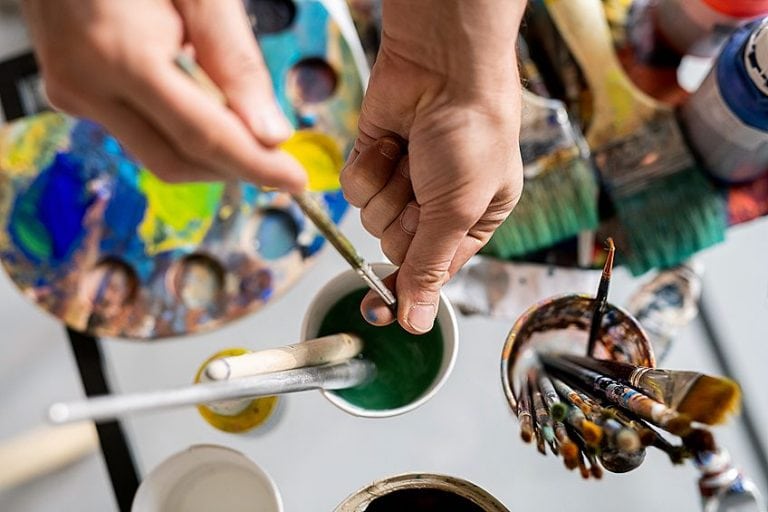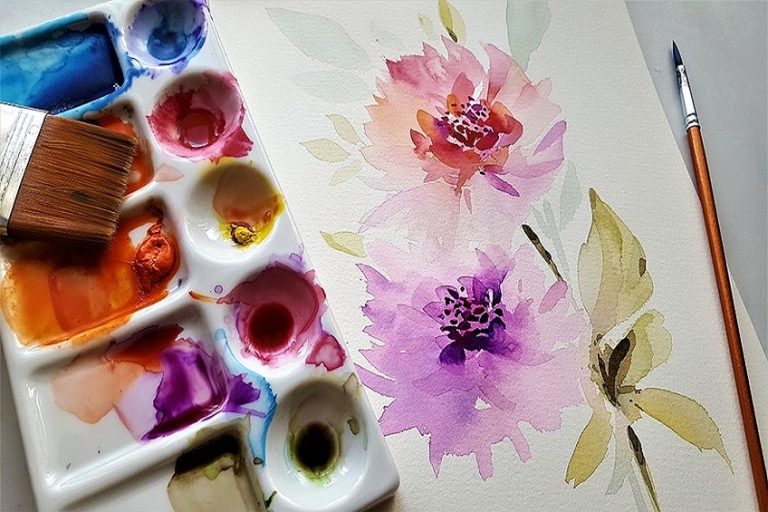Types of Painting – Exploring Different Types of Paint for Art
There are so many different kinds of painting styles and not to mention the different kinds of paints, that it can be difficult for someone who wants to choose their own painting styles. To create amazing artwork, you will need a lot of patience and hard work to get there. So, where do you begin? To help, we have created a list of styles and types of painting for you.
Different Forms of Painting
Humans are a creative bunch and we have been producing art for numerous years. However, we have developed from simple cave drawing to a variety of different kinds of painting. History has evidence of many artists, who over the years have created masterpieces. They laid down the foundation for future artists, who have taken different forms of painting to new levels.

Today, there is an assortment of different types of paint for art and painting styles. Gaining a better understanding of these painting forms and different kinds of paints can help you to make an easier choice. Some forms and paints are easy to work with, while others need a little more skill to perfect.
Below, you will find the various types of painting and some of the styles you might want to try out.
Well-Known Types of Painting
Most of us, whether we are an artist or not, are familiar with some of the different kinds of painting. Many of these we have been exposed to in our school years or later in life. Most of these types of painting are popular and are used frequently, while others are being brought to our attention once again.

Oil Painting
One of the oldest painting forms, it is known as a slow drying medium and uses pigments that are suspended in oil. Some of the more common oils include linseed, walnut, and poppy seed. You can easily work on a piece for extended periods, without having to worry that the paint is going to dry out.
You can also create beautiful texture effects, because of how thick the paint is.
The pigments are also vibrant and produce rich colors. However, some of the pigments are considered toxic and you have to work with mineral spirits to clean things up. The paints produce a glossy type of finish that is durable, however, some of the oil paints you get today have varying degrees of lightfastness. This means they fade at different levels, which should be disclosed on the tubes of paint you purchase.
Acrylic Painting
Acrylics are one of the more modern types of painting and were developed in the 1930s. This particular type of painting became quite popular, as it is fast-drying and also water-based. These are also considered non-toxic, and you can simply use water to clean everything up as long as the paint is still wet. This is because it dries to a hard plastic-like finish and is water-resistant once dry.
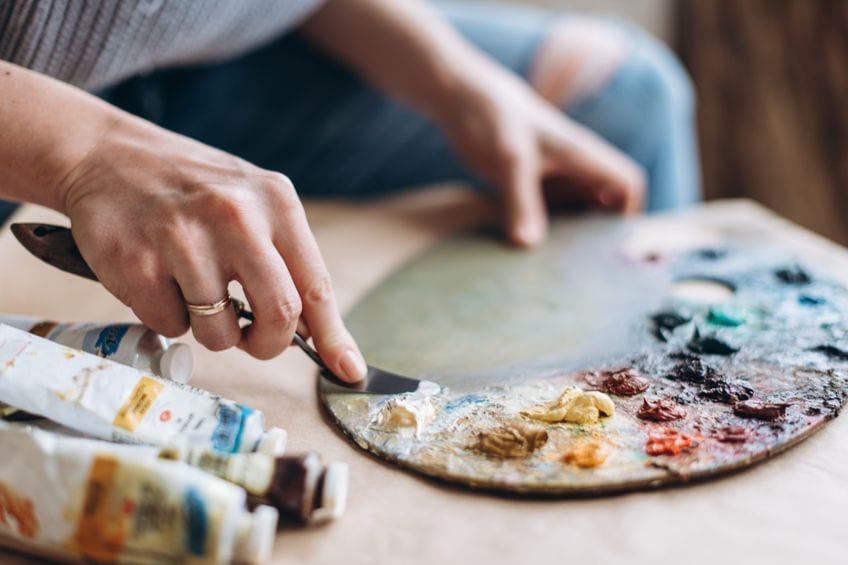
The paints are also cheaper than the oil paints, making them more accessible to many. The paint is also quite durable and will not yellow or form cracks over time. There is an abundance of different colors available, to which you can add different mediums. These mediums alter the way the paint works, for example, you can add a medium that helps lengthen the drying time. So, there are many techniques available, which makes acrylics extremely versatile. You can also apply acrylic paints to numerous surfaces from paper to canvas, ceramics, fabric, and more.
This is usually the type of painting and kind of paint that beginners will choose.
Watercolor Painting
Watercolor painting is also popular and can be done by beginners, however, it does require a little more skill to do it properly. The paint is usually transparent and contains a pigment and a binder. These paints are water-based, so they are safe to use, and you can clean up by simply using water. Watercolor paper is what you would use to paint on.
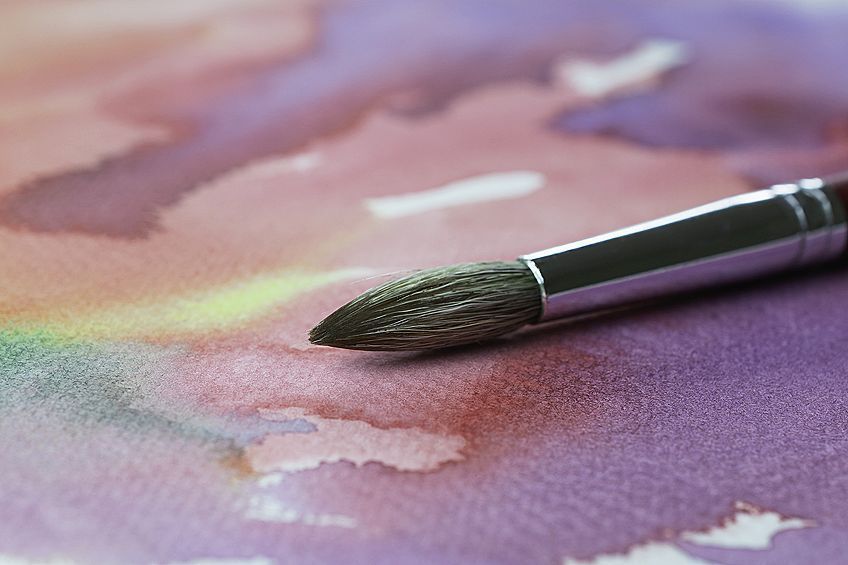
Watercolors are considered a little unforgiving if you have made a mistake as it dries fairly quickly, but there are a few methods you can use to fix mistakes. For example, you can reactivate the paint using a wet brush. You can use various watercolor techniques to create various painting styles, from landscapes to portraits and more.
Gouache Painting
The gouache form of painting has similarities to both watercolors and acrylics. The gouache paint can be re-wetted or reactivated like watercolors and is water soluble, but it has an opaque appearance like acrylics, but it dries to a matte finish, unlike the acrylics or watercolors. Because it is water-soluble, you will need to apply a varnish over the final painting, to seal it off for protection. However, there is also an acrylic-gouache paint option, that is water-resistant once dry. You can dilute the paint with water, and it usually provides vibrant color pigments.
The paint dries slightly darker and takes some time to dry, so you can work on your art piece for some time.
Pastel Art
This has also been called “dry painting” and has been a popular medium for many years. The pastels come in a stick form and are easy to carry around. The pastel sticks are made from pigment powder with a binding agent, which is then formed into ready-to-use pastel sticks. Pastels can be used on paper and canvas and provide vibrant and pure colors.
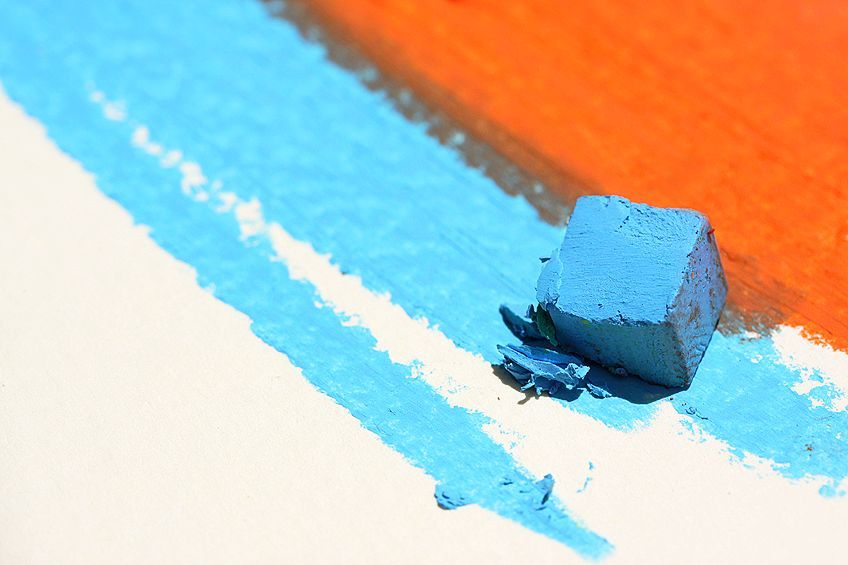
You get two main different kinds including soft pastels, which are the most popular, and oil pastels, which have an oily type of consistency. There is also a water-soluble variety that can produce watercolor-like effects. You can blend the colors while using them on the surface. The pigment itself can lift off the surface, so any artwork needs to be framed and covered.
Spray Painting
This is where paint is atomized by using a spray can, which can be used on all types of surfaces, preferably outside as it can make a mess and you need a well-ventilated space to work. You can spray canvas, ceramics, glass, walls, and more. Spray paint covers a much larger surface area more evenly than you can with a brush.
You can get oil-based as well as water-based aerosol spray paints.
One of the more noted art styles using spray paint is known as graffiti, which is commonly done on the side of buildings, and in many cases, done without permission. However, today graffiti artists are gaining a bit more ground and earning a bit more admiration for their work.
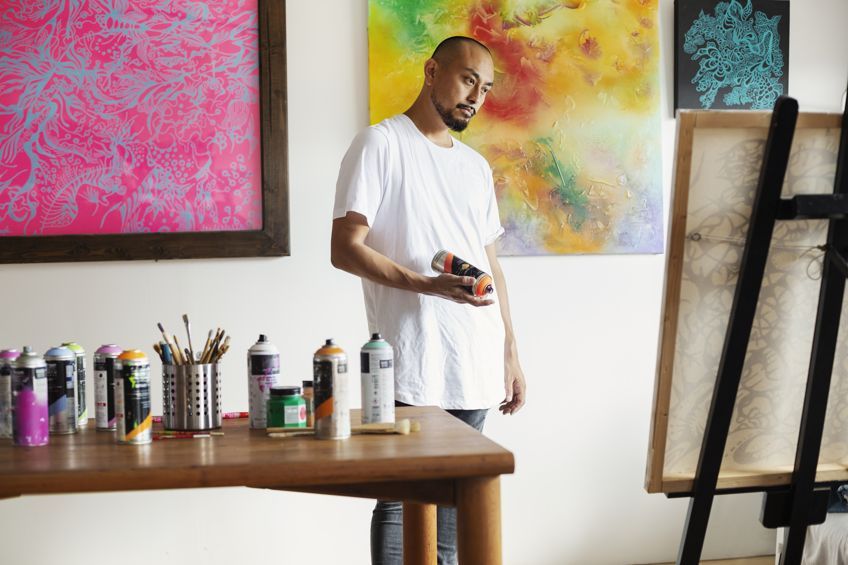
Other purposes for spray painting include using it in the creation process for three-dimensional models, as the paint reaches into all the nooks and crannies better than a paintbrush can. Some beautiful, spray-painted canvas artworks can be achieved. Besides the spray can, there are spray guns, which are also used to spray various substrates. They mostly use oil-based enamel, acrylic, or latex paints, but always check before you purchase.
Tempera Painting
This is also called egg tempera painting as egg yolks are used as the binding medium. These paints dry fast and are an even older painting technique than oil painting. However, today instead of eggs, glycerin, gum, or casein is used as the binder. When using traditional painting techniques, tempera provides more precision and requires many applications of a cross-hatching brush stroke. Once dry, it has a smooth matte finish.
Since the paint cannot be applied in thin layers, it lacks the deep colors oil paints provide, as it holds less pigment.
Pencil Sketching
One of the more common forms of art is a pencil sketch. All you need is a set of good-quality pencils to begin creating some highly defined artwork. The graphite pencil can create some of the most realistic art pieces with super fine details. There are many drawing techniques you can use, and smudging is one of them.
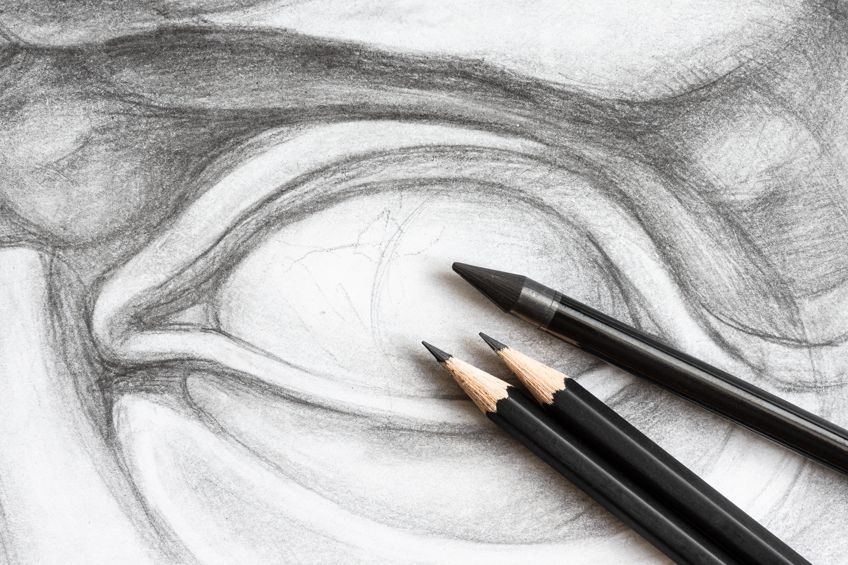
The pencils are portable and easy to carry around, so can be a much easier option when compared to painting and brush art. You can keep your pencil sketches black and white, but you can also use colored pencils to add even more depth and detail. Besides pencils, there are also other drawing mediums like charcoal, which provides its own properties. The charcoal sticks contain charcoal powder and a binding agent, making them easier to handle.
Charcoal is the perfect way to work with various tones in a drawing, creating some vibrant and amazing artwork.
Ink-Wash Painting
This type of painting originated in China in about the fifth century and later spread to Japan. The technique makes use of different shades of black ink to produce an art piece. The ink is the same as for calligraphy. The brush is usually dipped into some ground ink and then dipped into some water. This is then applied to a paper or silk substrate, to create a beautiful black and white painting effect.

Ballpoint Pen Art
Ballpoint pens, like pencils, are used often in everyday circumstances. However, you can also use them to produce some incredible art. A ballpoint pen is easy to use, inexpensive, easy to come by, and has a fast drying time. Like a pencil, it is also easy to carry around with you, and you can draw on the go effortlessly. Drawing with a pen also lends itself to creating beautiful contrasts that are visually pleasing.
One of the popular artists, Mark Powell, creates portrait drawings using ballpoint pens on repurposed canvas.
Glass Painting
Glass painting is quite popular, and you can create all kinds of amazing art pieces. You can paint on windows, glasses, jars, or any glass surface. You can use oil paints, acrylic, or acrylic enamel paints, as well as solvent-based paints. However, it is best to use paints that are specifically manufactured for painting glass. Some of these paints will be opaquer, while other paints are more transparent. In some cases, the painted item needs to be cured in the oven. Others will require a protective layer to protect from things like moisture and UV light.

Stained glass is in a whole other category and uses metallic salts during the manufacturing process. The glass windows consist of small colored glass pieces that form a pattern or image and are usually held together by lead and placed in a rigid frame.
Fresco Painting
Michelangelo is famous for his Fresco on the ceiling of the Sistine Chapel, which was done between 1508 and 1512. Fresco can be described as a type of wall painting. The word Fresco originates from Italian and means fresh. It was so named because the powder pigments were mixed with water and then used in plaster, which was then applied to the walls or ceiling while still wet.
This type of painting was soon replaced by oil painting later in the 16rh century, so it is not commonly done today.
Body Painting
This is a type of painting done on the body and requires non-toxic paint to be applied to the skin. Body painting is only temporary, unlike a tattoo, and can be used on the entire body or only on sections of the body, for example, face painting. One of the more famous make-up artists, who pioneered this kind of painting, was Max Factor Sr. As you may know, his name is now famous for a major cosmetics company.
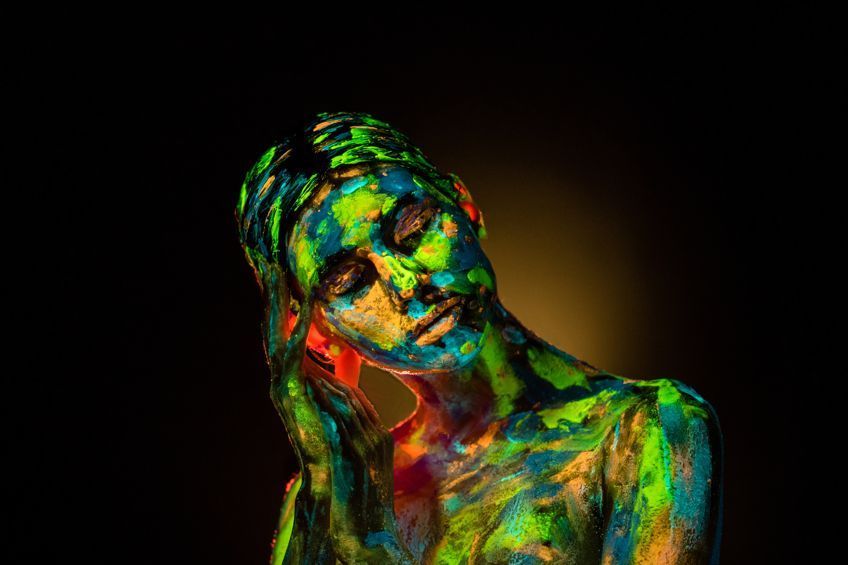
Less Commonly Known Painting Forms
There are so many types of painting that most of us have never even heard of. If you are studying art, you may have more in-depth knowledge, but for the rest of us, here are a few of those less common painting forms.
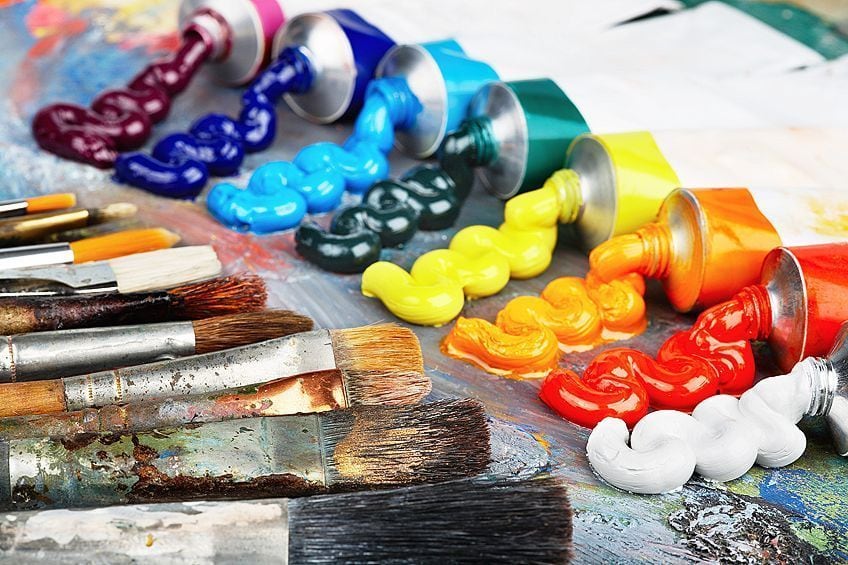
Encaustic Painting
This is a painting method that dates as far back as Ancient Egypt and is also known as wax art. The pigment is taken and added to hot beeswax, which then forms a type of paste that is applied to wood or canvas. The artists then use special tools to shape the wax before it cools. Today, many artists make use of heat guns to extend the cooling or drying time of the wax so they can work longer. This type of painting requires some skill but once mastered, you can create beautiful and complex artworks.
The combination usually produces vibrant colors, and once complete, it is water-resistant.
Sand Painting
This might be familiar to those with kids, as sand art is quite popular with the kids. However, many have been creating sand art for many years. It is also considered temporary art, thankfully today we can take photos and videos to capture the final art piece. However, the sand can be removed or fixed in place. Today, many artists use a table with a light placed underneath to display their art better. Also, artists can fix the sand onto the wooden canvas surface and apply a varnish to protect the final image.
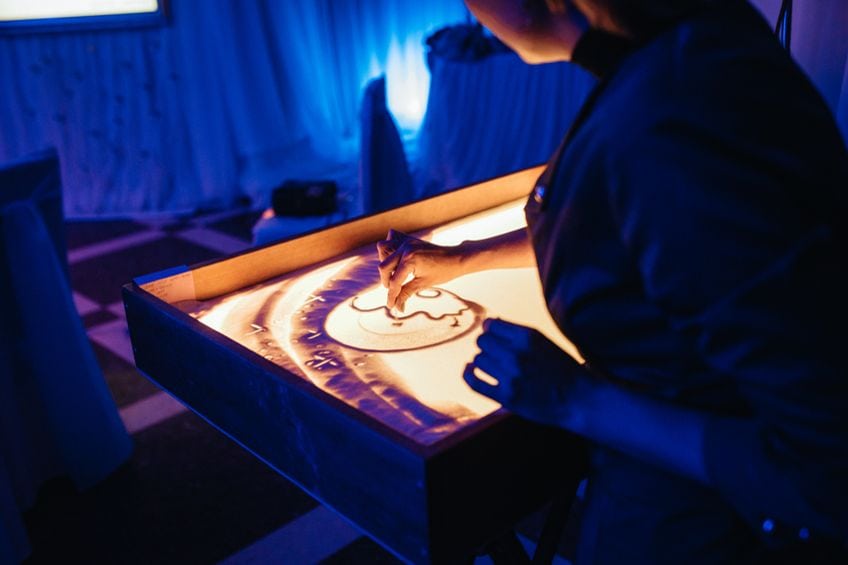
The art is practiced in many countries and in India, it is known as Rangoli or Kolam, which has beautiful and colorful designs and shapes made with sand. Also known as drypainting by the Native Americans as well as Buddhist and Tibetan monks. Traditional artists often used a mixture of crushed sandstone, charcoal, and other dry materials. The technique is quite challenging as you need to be precise and have a steady hand.
Velvet Painting
Velvet painting is done on black velvet and first began in Kashmir. The original artworks generally depicted religious portraits, mainly in the Caucasus region, and were usually done by Russian orthodox priests. This method of painting was then introduced to Western Europe and some pieces can still be found in the Vatican Museum. This type of painting became popular in the United States only later in the 20th century.
The velvet produces a contrast as the background is quite dark, and some artists use oil paints, while others like to use acrylics.
Panel Painting
This type of painting is done on a rigid surface or support like metal or wood and has more than one panel that joins together. Before canvasses came into the picture around the 16th century, this type of support was popular. A flat wooden panel is more common, and a variety of wood types have been used over the years. Many of the historic panel paintings were done by using wax or encaustic painting. This was then replaced by tempera and then oil paintings.
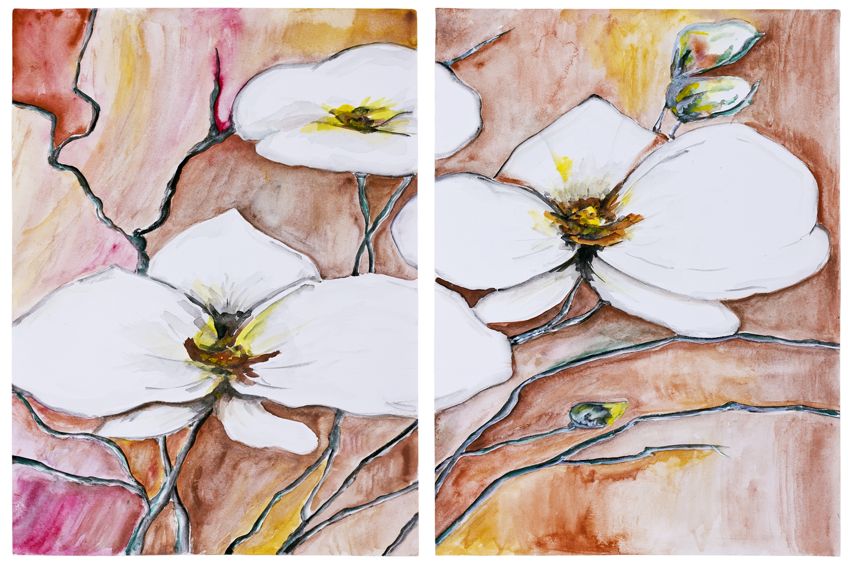
Allegory Art
This form of painting helps to depict certain emotions like love and hate and requires the artist to symbolize their art, which would then contain a moral or spiritual message. This is a great way for an artist to express complex ideas and can use objects to portray multiple meanings. This idea can be incorporated into a variety of art practices including painting and things like literature.
So, it can be a picture or story or any other method where you can use symbols as an ulterior meaning.
Miniature Painting
This type of painting is also known as limning and originated in the 16th or 17th century. An artist would produce a miniature portrait done on copper, ivory, vellum, or a card, and became quite popular in England and Europe.
There are also the Indian miniatures, which are very detailed paintings done on a small scale. It involves delicate brushwork and fine details, and even though there have been many advancements in art tools and equipment, the same squirrel hair is used as in traditional methods.
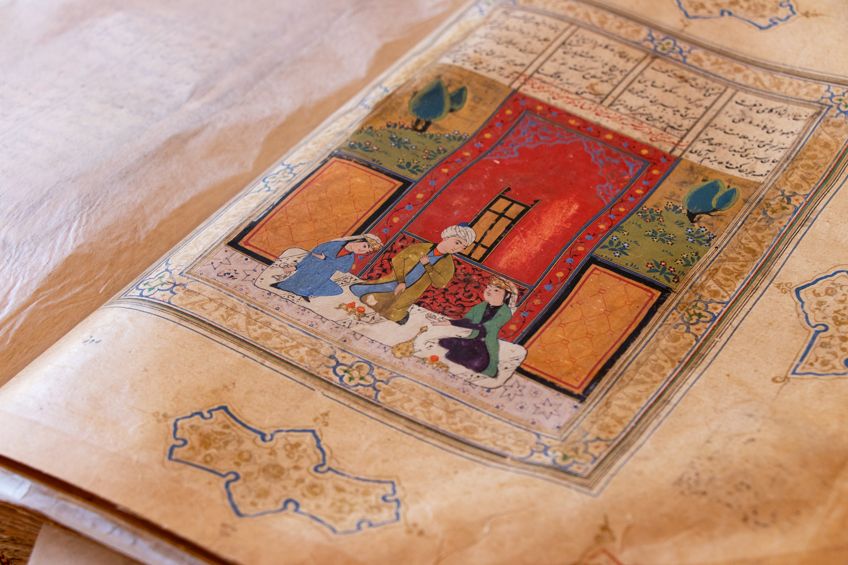
Trompe l’Oeil
This is a French form of painting and can be translated to mean “deceiving the eye”. The artist aims to create an optical illusion that makes the painting appear three-dimensional and offers a different perspective that fools you into thinking you are looking at something with depth, rather than a flat image. Some of the more modern examples include artists who create pavement or sidewalk art.
Sotto In Su is another form of this type of art and means “seen from below”.
The painting is done on the ceiling or a high surface and works with the surrounding architecture to create an illusion of sorts. Many of the paintings of this type were to create an impression of open skies. This was popular during the Renaissance period and some well-known artists include Andrea Mantegna and Giovanni Battista.
Foreshortening
This is another form of optical illusion, as it seems the images have depth. Artists usually create a figure or an object that appears to be extended and is a method of working with angles and perspective. The aim is to shorten a subject, thus making it look like it is further away. For example, the painting Lamentation of Christ (1480) by Andrea Mantegna.

Casein Painting
You can create paintings using eggs, why not milk? Casein painting does just that, it uses paint that is made with milk, and therefore, casein. When painting, this method produces similar results to that of oil paintings, which over time can even become water-resistant.
A famous artist who painted using this method, was Oscar Howe, a Yanktonai Dakota who lived in South Dakota.
Byzantine Art
This is a form of art that was popular during the Middle Ages and mostly depicted religious thoughts. For many years, artists used this form of art to interpret church principles within a painting. Byzantine art is mainly associated with Christian Greek art from the Eastern Roman Empire and other areas that were influenced by the Roman Empire.
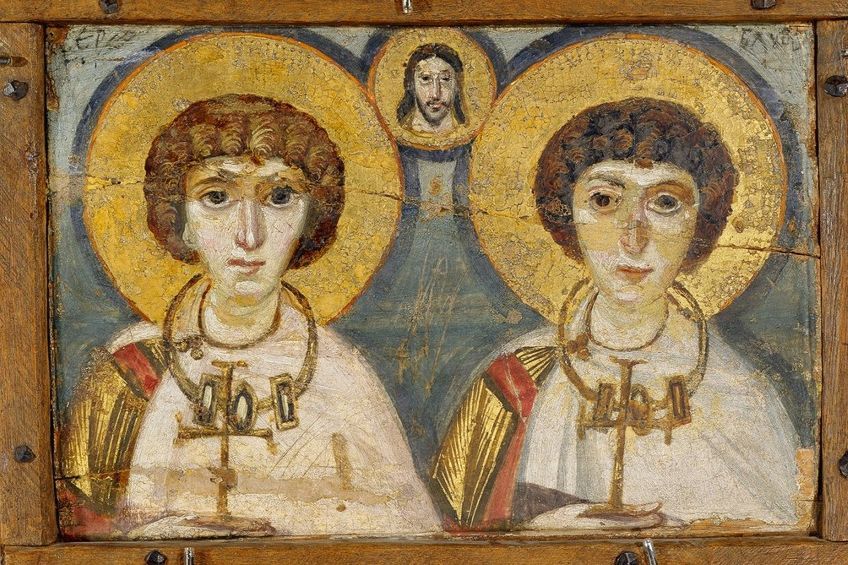
Sfumato
This is a technique that slowly blends tones and shades to create a smooth appearance. So, there appear to be no edges, lines, or marks that indicate a transition from one to another. The change from dark to light is also indistinguishable.
The most common medium used for this is oil paints, however, tempera is also used.
Grisaille Art
This type of painting is done by using only varying shades of gray, so you can say it is a mono-tone type of art. The main feature of this type of art is to try and create an illusion and shape of sculptured images.
Additional Different Kinds of Painting Styles
We have already been through many different types of painting, most of which can be done on any number of different surfaces. However, there are many more painting styles, and an artist is only limited by imagination. Below are some common and lesser-known painting styles.
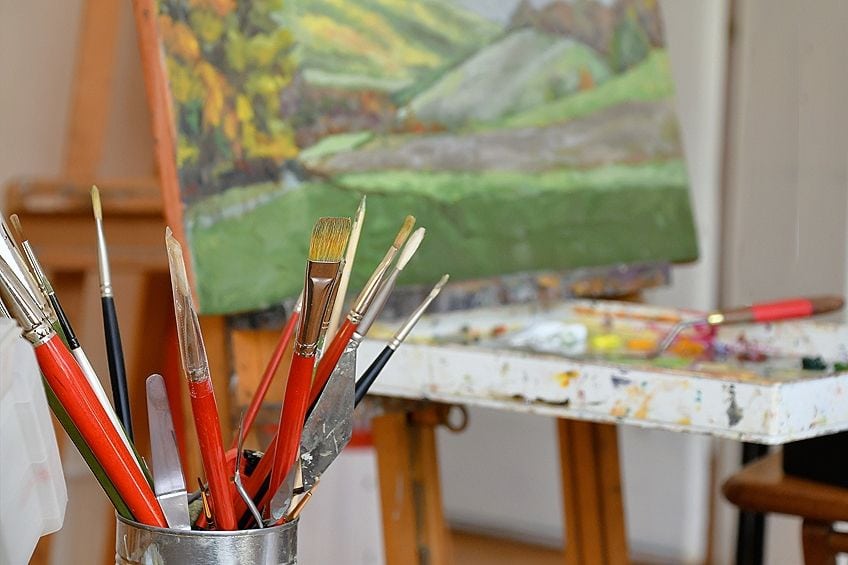
Abstract Art
Abstract art is something that does not represent anything real or accurate but uses colors, shapes, streaks, and smudges to create something more unique. Drip painting is an example of this art style, where paint is either poured or it is dripped onto the canvas. Another example is action painting, also known as gestural abstraction painting.
This is where the paint can be dribbled smeared or even splashed onto a surface.
Still-Life Painting
This is a great way for beginners to learn to draw and paint. Still-life paintings are produced by painting inanimate objects like fruit or flowers and other items. The artists are free to arrange the items as they wish and is a great way to explore textures, colors, shading, and other composition elements.
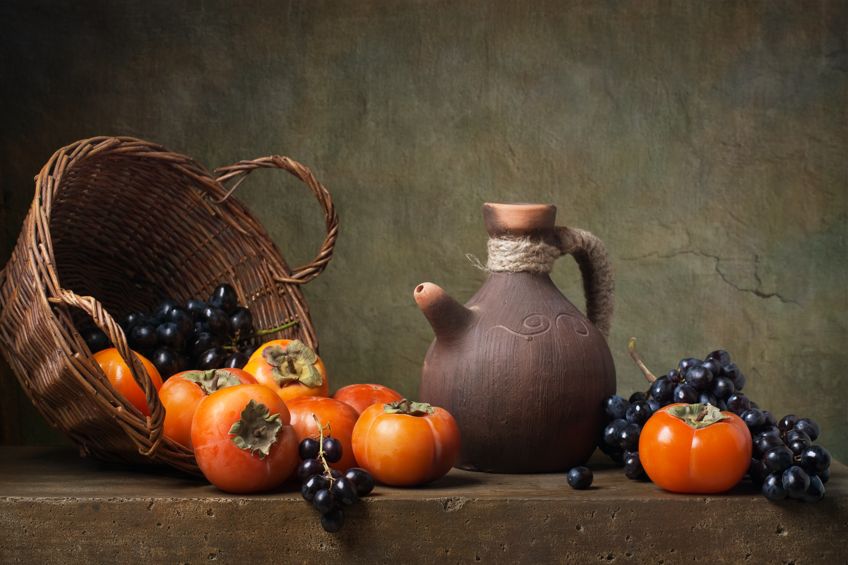
Murals
Instead of painting onto a canvas, an artist paints on the walls or even the ceiling. In most cases, the architectural elements are brought into the painting, which can help to produce a more three-dimensional art piece. Unlike graffiti, murals are an accepted form of art on public walls.
Murals are also quite popular inside homes, especially in kids’ bedrooms.
Portrait Painting
Portrait painting is as the name describes – a painting of a human subject. This can be challenging for beginner artists, as you have to capture facial features. The outcome should be focused on the correct form, without added imagery. Today, many also do animal pet portraits for their owners.
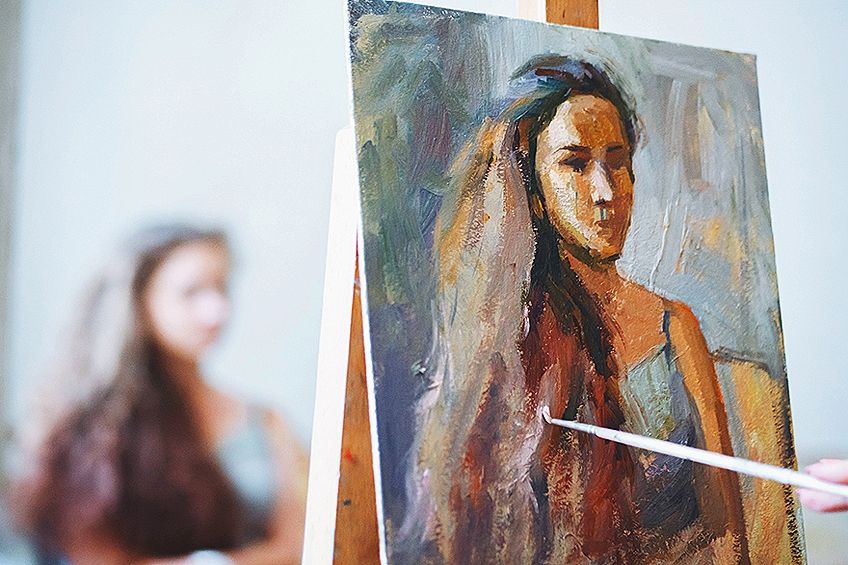
Artists can use any medium they are comfortable with including oil paints, acrylics, pencils, or watercolors, whatever suits your method of painting. You also have figure painting, which focuses more on the human form and does not place emphasis on the face. An artist is also free to use any medium for this style of art.
Landscape and Panorama Painting
Landscape painting captures outdoor natural scenery images, for example, forests, beaches, mountains, and many more. A panorama is more of a wide angle of a landscape or scene and is usually created on a wider canvas. The aim is to create a feeling of scanning the landscape as you would if you were there.
Another type of painting within this category is what is known as aerial perspective painting.
This type of painting creates an illusion of depth and distance as if you are looking down onto a scene. The idea was first described by Leonardo da Vinci, who noticed the contrast in colors between objects and the background.
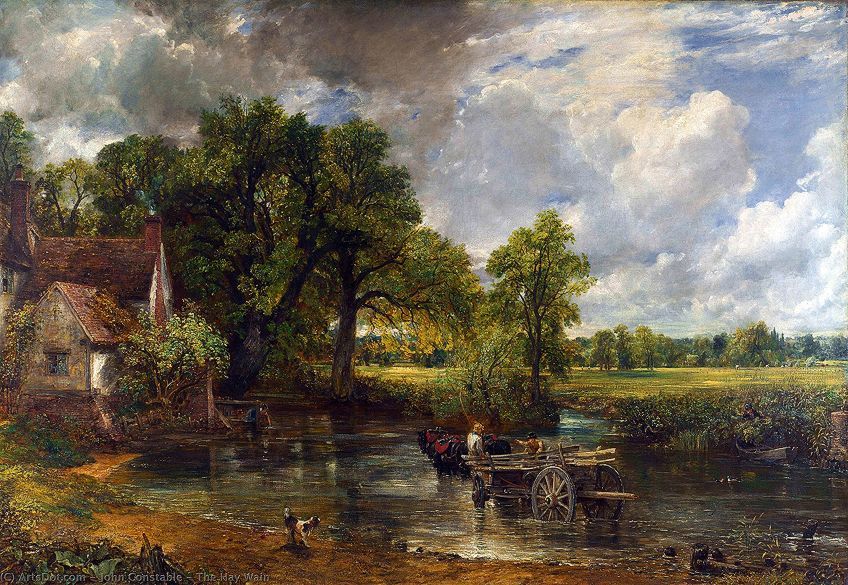
A more unusual form of painting that can also remain in this category, is known as Veduta. Instead of natural scenery, this involves a detailed depiction of a town or city, and the painting can sometimes be quite large. Artists who use this form of painting are known as Vedutisti. A famous artist who produced these types of paintings is Giovanni Antonio Canal, also better known as Canaletto (1697-1768).
Chiaroscuro
This art style uses strong contrasts between dark and light shades of paint. The artist can influence the painting by using this method, to create an almost three-dimensional appearance. The aim is to highlight or emphasize the main subject of the painting. For example, Girl With a Pearl Earring (1665) by Johannes Vermeer. Tenebrism is closely associated with chiaroscuro and offers more of an intense contrast from dark to light, using the dark as the most dominating feature.
This is also known as dramatic illumination.
Expressionism and Impasto Painting
This is a style of art that uses real images that can be distorted to express ideas or how an artist is feeling. For example, The Old Guitarist (1903) by Pablo Picasso during his blue period. Impasto painting can be used by expressionists to help direct attention to various aspects of the art piece. Vincent Van Gogh is quite well-known for using this style of painting. For example, The Starry Night (1889). The technique added movement as well as emotion to the painting.

Impasto painting or texture painting itself involves using undiluted and thick paint that once applied, leaves an almost three-dimensional effect on the canvas. The brush strokes are usually visible; however, the artist also uses a palette knife or sometimes their fingers to apply the paint. When you look at an impasto painting from the side, you will notice the paint sticking up from the surface. The most common medium used for impasto is oil paints, but today you can also use acrylics to which you must add heavy body acrylic gels, to achieve a similar effect.
Conceptual Art
Conceptual art can be hard for some people to appreciate. The aim is to place more emphasis on the idea behind the art, rather than focusing on the aesthetics of the artwork. This can involve paintings or any other medium as well as performance art. Concept art can draw on other art styles, for example, abstract or pop art, and in many cases, also moves towards a more minimalistic approach.
Damien Steven Hirst, an English artist is well-known for his artwork that involved dead animals.
En Plein-Air Painting
This painting style is done outside, away from the studio. The literal translation for this type of painting is “in the open air”. This is a great way to paint scenery and people in natural light and to capture the essence of the subject.

Hyperrealism
Hyperrealism is a type of painting as well as sculpture that represents or mimics a high-resolution photo. This style is about more than just an image, the artist adds more emphasis on the message behind the image than on the image itself. So, they tell more of a story with their artwork.
This is slightly different from photorealism, which focuses more on the subject and not on the emotions.
Impressionism
This style originated in France during the 19th century and was characterized by visible brush strokes that offer the slightest impression of a form. Paintings also included a precise portrayal of natural light. One of the more famous artists that produced such paintings was Claude Monet. An example of his work includes Impression, Sunrise (1872).
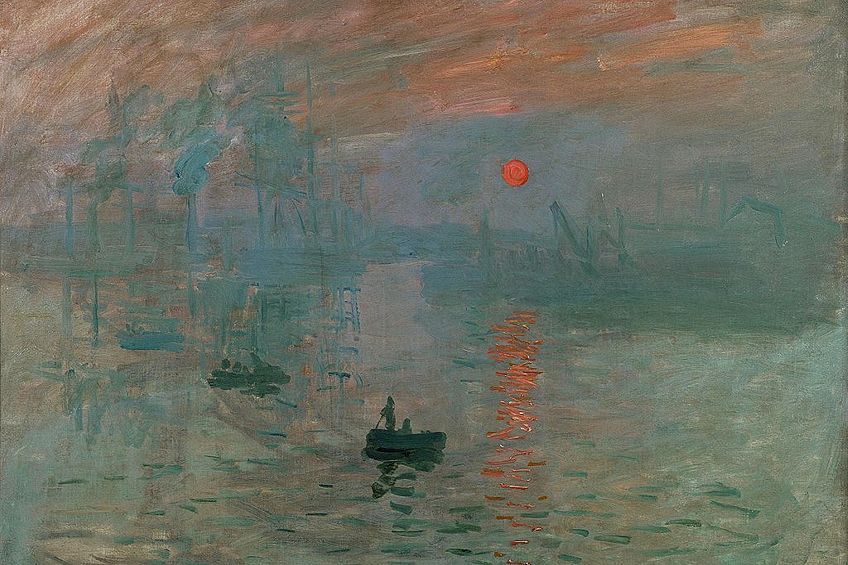
Pop Art
This is an art movement that originated during the 1950s. The art productions confronted the traditional fine art forms by incorporating images that were popular at the time amongst the general population. For example, comic books and other common items.
Some examples of this type of painting include Andy Warhol’s Marilyn Diptych (1962) and Tom Wesselmann’s Still Life #35 (1963)
Surrealism
Some might think surrealism is a bit odd, as it usually displays illogical scenes and objects that are not possible in reality. The style was developed after the First World War, which might explain some of the unsettling images that emerged. The techniques used allow the subconscious mind to express itself. For example, The Persistence of Memory (1931) painting by Salvador Dalí. Another great example is Les Voix Intérieures (‘Inner Voices’, 1985) by Didier Mazuru.
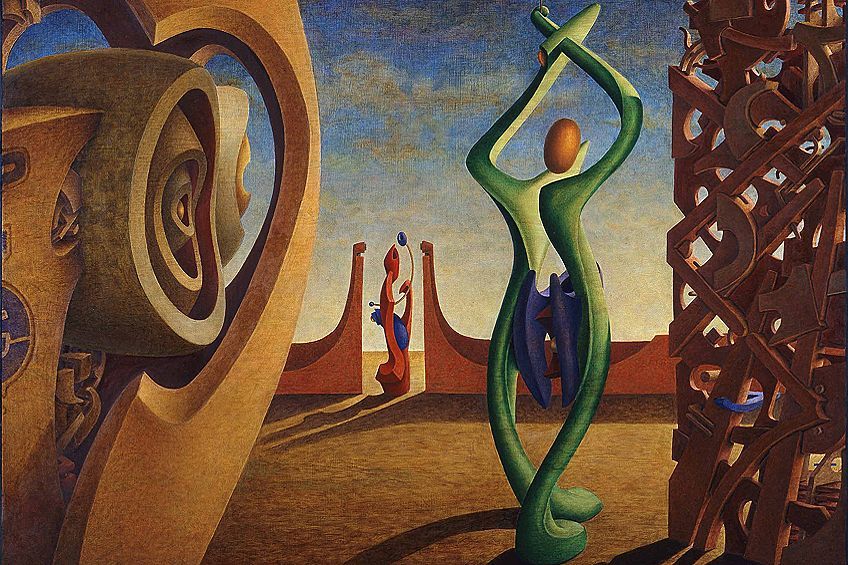
Futurism
This began as an Italian movement in the early years of the 20th century. The art is aimed at depicting the drive and energy of the modern world. Paintings can include other forms of art to express this, for example, cubism or abstract paintings.
Most notable subjects include technology, speed, modern transportation, and industry.
Cubism
This is a unique way that artists depict reality and arose during the early 20th century. One of the more famous artists associated with this style of art is Pablo Picasso. Their viewpoints were a little different and objects as well as figures appeared fragmented and abstract. An example by Picasso would be Les Demoiselles d’Avignon (1907)
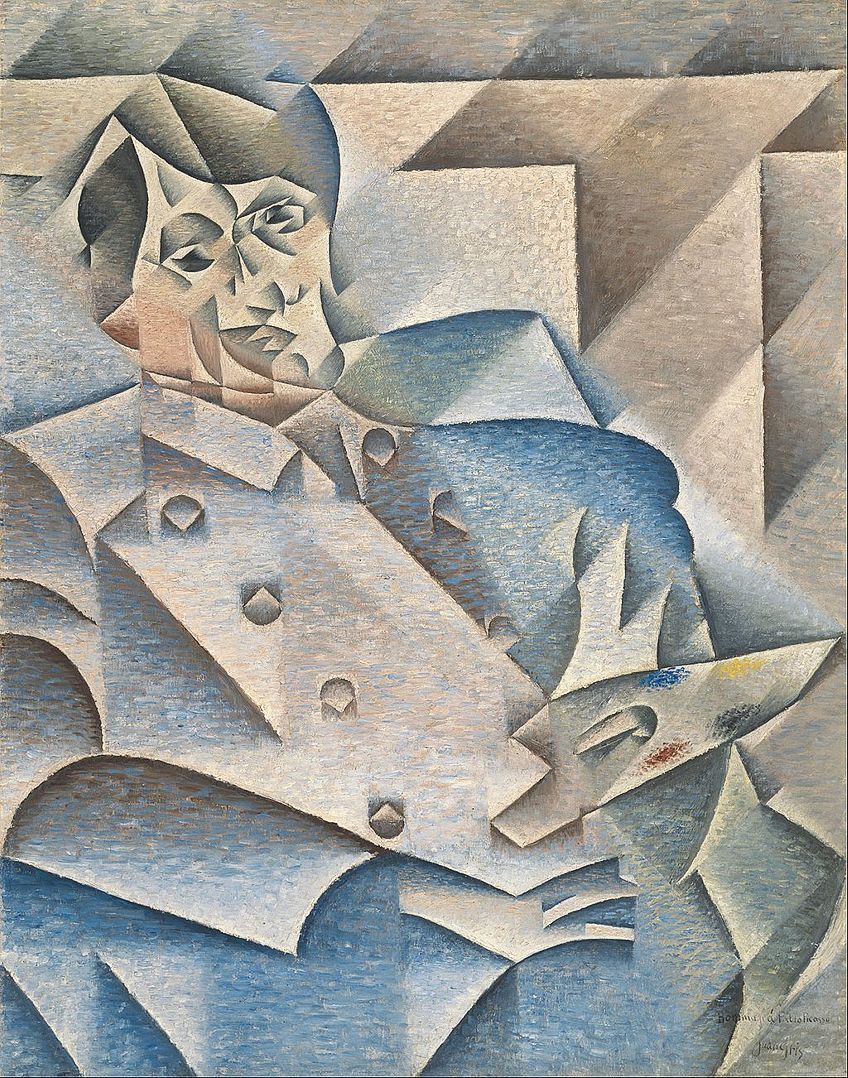
Modernism
This was a global movement concerning society and culture and was formed during the early 20th century. Artists were trying to associate modern life and art, and so, began using new techniques and even materials to create something that depicted the hopes and ideals of the time.
The artwork American Gothic (1930) by Grant Wood is considered a painting under the modernism category.
Divisionism
This style of painting is also known as chromoluminarism or Pointillism and was often used in Neo-Impressionist paintings. The technique uses individual dots or patches of separate colors, which then interact with each other and form an image. The viewer’s eye is what blends or combines the colors, which is believed to produce maximum luminosity or the appearance of light. The style was first developed by Georges Seurat as well as Paul Signac in 1886. An example of this can be seen in The Beach at Heist (1891) by George Lemmen.

Digital Painting
As technology advanced, so did the methods of art. Today, you can create amazing artwork using a computer. Many of the paintings and the way they are created are as close to the real thing as you can get, without using a brush and paper.
Some artists enjoy this form of painting; however, many would rather stick to the more traditional ways.
Art Nouveau
This can be described as an ornamental type of art that became popular during the late 19th century and early 20th century in the United States and Europe. The style is recognized by long and flowing organic lines. The art movement itself aimed to unite both art and design. The techniques are used in architecture, jewelry, and illustrations as well as in materials like iron, ceramics, and glass. An example would be The Strawberry Thief (Flower and Bird Pattern), 1884 by William Morris.

Collage Paintings
Collages can be created by gathering a collection of other materials like photographs, newspapers, paint, and fabric, and coming up with something more unique. The final piece should be visually appealing.
You can also get photo collages that consist of several or more photos, which can be created on a computer program or printed out and placed in a single frame.
Custom Paintings
This is a more recent style of painting and involves artists painting what clients want. These are usually paintings of family, friends, and even pets. Artists can also combine different photos into a single painting. The results are unique pieces of art that can be treasured by those we love. Artists can use any medium from oil to acrylic and watercolors or colored pencils.

Matte Painting
This style uses either the traditional way of painting or it can be digitally created. The images are used in creating realistic sets for filmmaking or also within the gaming industry. Larger filming sets are created after a matte painting has been created and approved.
These paintings can also be used as backgrounds for certain backgrounds that would be too expensive to recreate.
Mixed Media Painting
This is when artists use different types of media as well as techniques to produce unique artwork. Some of the media used include paint, paper, cloth, wood, and other items. Artists can also use various types of paints like oil paints, acrylics, watercolor paints, as well as colored pencils.

Nib Painting
This painting technique developed during the 17th century and uses a dip pen and ink to create the artwork. The various shapes and size nibs of the pen can be utilized to create lines and dots.
This can create a final image resembling something close to an embroidery-type appearance.
Traditional and Cultural Types of Painting
Some of the painting styles have been around for many years and form part of a particular culture. Many of these art styles and forms use unusual techniques and materials, which you could also try in your own artwork. Below are a few selected examples of these types of paintings.
- Gond Painting: Tribal art by the Gondi people in India, which contains colorful and mystical imagery. Paints are obtained from natural sources, for example, plants and charcoal.
- Phad Painting: This is from the early 17th century in India. The techniques used include folk and scroll painting with many details added, mainly of religious deities. Natural paints are used to paint the cloth, also known as phad.
- Japanese Painting: This has its own unique style but can be said to have elements of other Eastern and Western art. It is considered a highly refined form of visual art.

- Madhubani Painting: This is an Indian style of painting, which uses brushes, twigs, nib-pens, matchsticks, and even the artist’s fingers to create the artwork. This style is said to be over 2500 years old. The main element in the art is geometric shapes and vibrant colors.
- Chinese Painting: Originating in Ancient China, this style uses similar techniques used for Calligraphy. Inks are used on paper and silk, using exact strokes and other watercolor techniques to capture the essence of an object or scene.
- Warli Painting: From the 10th century, also from a region in India, Warli, uses a mud base and powdered rice to create white images.
The various styles and types of paintings reach far back into ancient civilizations, evolving over the years to branch out to all forms and types of expression. The capacity for human creativity is limitless and learning from the old masters and understanding the history of art, can only help create room for more unique ideas and techniques.
Frequently Asked Questions
What Are the Different Types of Paint for Art?
There are a few different kinds of paints, and many artists prefer to use a specific type of paint for their artwork. These include your oil paints, watercolor paints, and acrylics as your three main types of paints.
What Are the More Popular Painting Styles?
There are quite a few painting styles, but there are quite a few more popular ones. Several of these styles include Impressionism, Abstract art, Surrealism, Hyperrealism as well as Photorealism, Pop art, and Digital art.
What Kind of Art Is Painting?
There are many different kinds of painting, but in general, painting forms an essential part of visual arts. There are many elements that painting brings, from drawing to composition, narration or narrative art, and abstractions, as with Abstract art.
In 2005, Charlene completed her Wellness Diplomas in Therapeutic Aromatherapy and Reflexology from the International School of Reflexology and Meridian Therapy. She worked for a company offering corporate wellness programs for a couple of years, before opening up her own therapy practice. It was in 2015 that a friend, who was a digital marketer, asked her to join her company as a content creator, and this is where she found her excitement for writing.
Since joining the content writing world, she has gained a lot of experience over the years writing on a diverse selection of topics, from beauty, health, wellness, travel, and more. Due to various circumstances, she had to close her therapy practice and is now a full-time freelance writer. Being a creative person, she could not pass up the opportunity to contribute to the Art in Context team, where is was in her element, writing about a variety of art and craft topics. Contributing articles for over three years now, her knowledge in this area has grown, and she has gotten to explore her creativity and improve her research and writing skills.
Charlene Lewis has been working for artincontext.org since the relaunch in 2020. She is an experienced writer and mainly focuses on the topics of color theory, painting and drawing.
Learn more about Charlene Lewis and the Art in Context Team.


